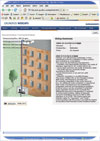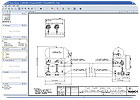
In the spectrum from “you can only get it one way” to “anything is possible,” We suppose that packaged pump systems fall closer to the latter. If the components are available, you can find a company that will put together almost any possible combination. Still, there are some good reasons for how the manufacturers write their standards. You can be pretty sure that a major manufacturer has more pump system experience than your engineering firm. Why not use it to your benefit?
At this point in the evolution of pump systems, we see some trends worth noting. From the design standpoint, it’s very rare for an engineer to underestimate the pressure boost. Good job, and keep it up. The biggest problem we now see is the coordination of jobsite voltage. We’re sure that it’s somewhere on the drawings. But somewhere between the plan drawings and our production floor, someone assumes 460V, when only 208V is available. Going up in voltage is cheap and easy. Dropping the voltage is expensive and sometimes time consuming. Let the finger pointing ensue at that point.
Properly estimating flow is another sticky wicket. Most engineers use a spreadsheet of some sort. Our admonition to reduce Hunter’s Curve’s sizing is a generation old. And since David Hanson’s articles circa 1981, we’ve seen two rounds of flow reduction in some fixtures.
For some pump systems, it’s not only wasteful, but it hurts the pressure control abilities of the equipment. Think about driving a car at 20 mph. If third gear were right, would you drive in fifth just to be safe? So it is with PRVs, and, yes, even variable-frequency-drive (VFD)-controlled pumps. You’ll wear out the equipment (pressure-regulating valve [PRV] or motor) faster. Plus, it’s less efficient.
We should note that the Hydraulic Institute has a very informative seminar about improving pump efficiency through better system analysis. The seminar also gives a good review of what kind of pump is right for a given flow and head. This is another former area of concern that plumbing engineers have figured out: The bigger, heavier, more expensive pump isn’t necessarily the best for the job.
Much has been written about the benefits of VFDs, so we won’t rehash them here. We will mention that we conducted an informal survey of about 200 plumbing engineers and about half were specifying VFD pump systems. Some manufacturers use them exclusively. And for the types of pumps they use, VFD helps control the low-flow pressure spikes better than PRVs. The energy savings is a great side benefit.
We also contacted 14 booster pump system manufacturers [see sidebar] to find out what types of online software they offer plumbing engineers to help them design VFD or PRV systems. (Our intention was to cover all the companies we know of that have a presence outside their hometown. To any that we missed, our apologies.)

This company’s site offers a schematic drawing
and input summary. Source: Grundfos.
What Does the Site Calculate?
Several sites were limited to giving you the forms, formulas and tables to create your own design off-line. While we’d like to see more automation, the sites providing these materials are definitely better than the ones that didn’t have any selection guidance at all. Of course, there’s always your local rep. A savvy local rep is always going to give you a more efficient design for your area.Grundfos has probably the most sophisticated selection software. It selects pumps and motors, and calculates motor efficiency, power factor, gross weight and even compares life-cycle costs of constant and variable speed options. It includes automated links to the drawings that match the recommendations. About the only thing it didn’t calculate for us was what kind of pump to use. You need to choose that before getting into the design. It was the only automated selection software with optional metric inputs and outputs.
Delta P Systems Inc. calculates the system duty point, in terms of flow, head and minimum incoming pressure. After that, the local rep takes over for the final system selection.
SyncroFlo gives automated recommendations as to what kind of pump to select, where to locate a tank and whether to use VFD or not. It selects pumps and motors, and gives coordination data like power requirements, weight and footprint.
Formulas Used
Sure, booster pump manufacturers would like to automate our designing. But more important than saving time is whether the design follows our design practices. Automated or not, how do the manufacturers make their selections?
Several of the manufacturers have charts to convert fixture units to flow. While these might be helpful to some, my experience has been that most engineers use their own tables. Several others use the ASPE Standards. Most pump manufacturers recommend a 5 psi maximum drop through the PRV. For most PRV manufacturers, that is about 120 gpm for a 2" PRV, and about 220 gpm for a 2-1/2" PRV. Patterson Pump/Flo-Pak recommends a 2" PRV up to 200 gpm. It appears that system losses are included in the sizing, and that’s within the flow limits that the PRV manufacturers recommend. In some situations, you might be able to reduce your motor size with a larger PRV.
It is common practice to trim the impeller to maximize motor utilization. Meaning that if you specified 150 feet, you might actually get 155 or 165 feet. That’s great, because it’s a rare building that all the pressures are exactly what we thought they were going to be. In drastic cases, we might recommend field-trimming the impellers down to more closely match the actual pressure requirement. But that’s only if overpressurization is a danger. Generally, we take the extra pressure and increase the energy stored in the tank.

Designers can get detailed drawings online, such
as this one, which illustrates a two-pump booster system with tank mounted over
the pumps. Source: Namco.
System Losses - Your Neck Or Theirs?
About once a month we see an unfortunate incident: Instead of adding internal losses to the pump pressure requirement, an engineer deducts them. This usually means an expensive change order, as the motor is generally too small at the new pressure. We always recommend specifying the pump system boost pressure, not what the pump does. That way the manufacturer is responsible for knowing and compensating for the internal losses - which are always more than the industry standard of 5 psi, right? If we are planning on PRV losses of as much as 5 psi, then we know that we’ll have some amount of friction loss.Help With VFD Selection?
Grundfos is a strong proponent of VFD pump systems. So it is no surprise that their Web site makes it easy to design around VFDs. This manufacturer is the only one to offer online help on all three design options: without VFD, with VFD by their company or with VFD by another manufacturer. Based on a load profile, which you can modify, the software calculates the payback period for the cost added to go VFD. It also takes into account electricity cost, plus it allows for inflation.
Most of the other manufacturers don’t weigh-in on the VFD question. Canariis gives a detailed description of when variable speed is a good choice. SyncroFlo asks certain questions about demand characteristics and first-cost sensitivity. Then, based on these answers and the technical requirements of the job, the software gives an automated recommendation. To VFD or not is part of the answer, but it also recommends pump type, whether to have a tank and, if so, where to put the tank.
Technical Documents Availability
About half the manufacturers were limited to images of their catalog data. Forms, drawings and specifications could be printed out, but are not currently in a format to transfer to design documents. This survey did not cover what suppliers could do when you call your local rep and ask for CAD drawings.
Pump curves with published efficiency points were mostly absent. That’s disappointing: Most every engineer wants to see a pump curve before finalizing a design. Only Grundfos had automated links to the appropriate pump curve.
We found the most drawings on the Namco site, and they are in the .DWF format. Design Web Format (DWF) is an open, secure file format developed by Autodesk for the efficient distribution and communication of rich design data to anyone who needs to view, review or print design files.
Because DWF files are highly compressed, they are smaller and faster to transmit than design files, without the overhead associated with complex CAD drawings or the management of external links and dependencies. (Source: http://en.wikipedia.org/wiki/DWF.) They don’t transfer directly onto drawings. You should also know that the file is 40MB.
Tigerflow has the most drawings in .DWG format. Their site is a great source if you want a drawing for a typical end-suction duplex or triplex pump system - and don’t want to register or fill out a form

An example of an online booster sizing
calculator. Source: Delta P Systems Inc.
As a final note, in most cases you don’t need to register in order to see sales literature. However, in every case you have to register in order to use automated selection software. Current opinion among most engineers is that registering requirements are fair when they are getting design assistance in return.
Summary
It has taken us a long time to admit it, but we finally understand that it’s okay for first cost to be the most important criteria in building design. Take a hotel, for example. Until the first customer checks in, cash flow is all negative. Until guests are regularly filling beds, nobody is worried about saving a few points on energy consumption.
As a designer, you need to consider not only the technical requirements of the job, but also the business requirements. Is fast occupancy most important? First cost? Maybe service technicians are remote or inaccessible. This can be the case in Manhattan just as often as a national park.
How about special energy incentives? Would the owner pay more for a few “green” upgrades? Whenever you have the chance, pass this information along to a rep you trust. It’s their job to be the expert on their equipment. They can help you give the owner just what they want.
And please try to avoid contractor changes to your specifications. Whether they are adding or deducting to the owner’s cost, you can be sure that the owner would have been better off with the final design being the one that was on the original plans. Contractors never give back all they save, and they shouldn’t. They have taken a risk going against your design. Let’s not give them any reason to do that.
TABLE: Booster Pump System Manufacturers and Web Sites
Amtrol:http://www.amtrol.com/pressuriser.htmArmstrong: https://aceonline.armlink.com/newdefault.asp
B & G: http://rcwapp.itt.com/esponline/BG-ESP-PLUS-Log-in.asp
Canariis: http://www.canariis.com/design/design.html
Delta P: http://www.deltapsystems.com/admin/newAcct.cfm
Federal: http://www.federalpumps.com
Goulds Pump: http://www.goulds.com/booster.asp
Grundfos: http://net.grundfos.com/Appl/WebCAPS/custom?userid=GPU
Metropolitan Industries: http://www.metropolitanind.com/LITERATURE.htm
Namco: http://www.namco-div.com/booster/booster.htm
Patterson Pumps: http://afpselect.pattersonpumps.com/pssg/login.aspx
SyncroFlo Inc.: http://extranet.syncroflo.com/Sizing/step1.php
and http://www.syncroflo.com/sys12/12-Systems.swf
TigerFlow: http://www.tigerflow.com/pdfs/brochures/2106TGRsizingbro84-LR.pdf
V-C Systems: http://www.vcsystems.net/